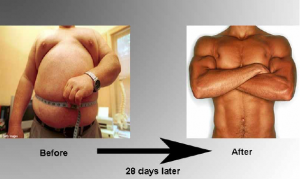 This past weekend, the RenEx Team had the unique opportunity to participate in a roundtable discussion with Dr. Doug McGuff. I think there were a number of real gems that came out of this conversation.
This past weekend, the RenEx Team had the unique opportunity to participate in a roundtable discussion with Dr. Doug McGuff. I think there were a number of real gems that came out of this conversation.
This was a two hour conversation with some of the best intellects in the industry. This call is a must hear for anybody interested in High Intensity Training.
We talked about how the Renaissance Exercise protocol and RenEx Equipment fit in with this ideal and shared some of the RenEx vision with Doug. The bulk of the conversation revolved around optimizing the exercise stimulus in order to produce the ultimate exercise.
This was a monumental discussion as Doug’s work was one of the catalysts for what we are doing today.
So stay tuned as we will make this call and some other amazing content available to you soon!
In the meantime, one of the subjects that came up was how much time and energy has been spent on the stimulus, but also how ignored the ‘other’ variables often are.
The way most people evaluate their results is based on physique transformation.
I think most anyone can appreciate that the visual impact is dependent on diet and exercise.
Generally the leaner we are the more we can see the fruits of our labor. It is quite possible that we could be very healthy and have developed exceptional functional ability without appearing that much different. See the article ‘Proper Exercise and its Role in Reducing Fat’ here.
This paper discusses the relative importance of diet and exercise in the fat loss equation.
If it’s not already understood, it will be after reading this article that diet is the biggest constraint that one must overcome in order to produce the so called “result” which usually means the visual impact.
We should all be able to agree on this fact and there is certainly another variable that might provide a constraint for the body to synthesize the best result from our exercise stimulus.
 Of course insufficient rest/recovery will restrict what the exercise response will be.
Of course insufficient rest/recovery will restrict what the exercise response will be.
So, obviously we must remove ALL of the constraints that keep us from producing and responding to the most effective exercise stimulus and of course diet must support the desired result and without rest and recovery none of this will matter beyond a certain point.
This all feels pretty remedial considering that this site is so full of technical information, but I think it’s worth mentioning because these facts still tend to be ignored and using the end result to measure the effectiveness of the exercise stimuli leaves much to be desired in my opinion, at least when it comes to researching and evaluating methods.
In the end all that anyone really wants is the “results”. I understand that is why everyone is here, but if we do not look closer, if we are not clear on what it takes to optimize the results, if we do not measure the right things, I don’t know how we can get any closer to the ultimate.
On a number of forums I’ve been asked to prove that the Renaissance methods are superior. Some of the requests have been ridiculous, others have been very reasonable.
Below is what I would consider a reasonable request although I don’t think it will be a proof for the RenEx program or any other. I do believe the request below has value and must be addressed in order to get the desired result for most, but I don’t think it should be the focus to establish RenEx as the most efficient or effective exercise stress.
See why…
“Josh, I applaud your efforts and sincerely hope they meet with success. Better tools, better protocols and increased knowledge could ultimately benefit more than just those who live in proximity to an OVERLOAD FITNESS franchise.
For all the discussions about the specifics of how/why/what/when, one very simple criterion will determine as much as anything the success of your efforts: results.
If your protocol and tools are as far superior to what I’ll call conventional HIT as you believe, then it follows that the results produced will be far superior as well.
I say this in a spirit of openness and respect: Since you are making the claim of having helped in developing a superior protocol and superior tools, it is incumbent upon you to demonstrate superior results. I neither believe in nor doubt your ability to do so. I truly wish that you can because, as I said, we may all benefit in that case.
One measuring stick that Dr. Darden has used that few others have is standardized photography. Few have used this because it is so objective, because it lays bare one of the truest gauges of any program’s efficacy.
I realize that body composition changes are not the sole measure of progress nor the most important to all trainees. Still I think improvements in composition and appearance would rank high with what most want from their training.
All of us – or nearly all of us – realize that comparing individuals proves little. People train all “wrong” yet have impressive physiques while some train “correctly” with only modest results for their efforts. However, the overall results of employing a superior protocol and tools would be…superior.
I’ve long wanted studies comparing the effectiveness of various training protocols to use subjects who share the most genetic traits possible. Ideally, multiple sets of identical twins or triplets would follow different programs while controlling for other factors. I think those results would be enormously interesting though not necessarily definitive.
So, Josh…any chance that you have the inclination/time/resources to obtain the cooperation of a pair or pairs of identical siblings to conduct such an experiment? One of the pair would follow the OF protocol while the other used conventional HIT or even conventional HVT training. You are obviously of a meticulous nature so I’ve no doubt the recording of any subjects’ strength gains along with photographic before-and-after comparisons would be of the highest precision.
Once again, I would truly hope you would produce superior results. Such documented results could be a strong selling point for OF memberships and franchises.
In any event, keep up the good work.”
AI1963,
Thank you for the thoughtful post and sincere interest.
I do think a picture is worth a thousand words. However, I don’t necessarily think it proves the methods. I have loads of before/after pictures of clients. The most impactful ones are ALWAYS related to the people who manage their nutrition most effectively.
 I appreciate the need for ‘proof’ and ‘results’, and I have plenty of these photos, but I’m not sure what they really say.
I appreciate the need for ‘proof’ and ‘results’, and I have plenty of these photos, but I’m not sure what they really say.
So, what can we measure?
We might be able to evaluate how severe the exercise stress was to the body… in other words what the immediate effect of the exercise was. This will allow us to refine the exercise stress in order produce the most severe exercise stimuli.
It is NOT my opinion that exercise stress is usually applied in such a way that is too severe. It is my opinion that the body is wired to avoid severe and direct exercise stress and will circumvent the stimuli where ever possible. I believe testing efforts should be focused on optimizing this stimulus.
If somehow we can concentrate the stimuli to a degree that is maximal we can start to work backwards from there.
In my opinion trying to evaluate the outcome, what the body has synthesized from the exercise, is too inconsistent to really ever tell us anything but artifacts. There are just way too many variables to account for.
I’m not going to list them all, but just two really big variables that affect what the body actually produces from exercise are the subject’s experience; a newbie compared to someone who has trained 20 years.
The other big one that has been down played by the H.I.T crowd is diet. I can radically change by body comp by changing diet alone.
My interest going forward is optimizing the stimuli and measuring that.
The end result, what is synthesized, is always going to be a product of stimuli, diet and rest/recovery.
I believe RENAISSANCE EXERCISE can produce better results.
I know for a fact that we do so in a more time efficient manner.
I don’t think it’s hard to produce good comparison photography results. Like I said we have them, but it always depends just as much on the other variables.
I’d like to put my money and time into demonstrating just how well we can produce the stimuli. That being said what you SEE in the way of client ‘results’ will always depend on how well they did when I wasn’t with them.
So….if this is the “measuring stick” what are we REALLY measuring???
We’re not measuring the effectiveness of the exercise program, but to a great extent our ability to get the subject to modify their behavior when they’re not exercising.
If this is the case perhaps a life coach, personal chef, a deserted island or a psychologist has the best program.
The industry standard IS before/after comparison photography.
In my opinion this medium has been horribly abused.
Nonetheless, we’re probably stuck with it and I’m fine with using this as a feedback tool to encourage further behavior modification, but I think we need to set a higher standard with regard to demonstrating the effectiveness of the stimuli part of the equation.
Going forward my efforts will be geared toward evaluating process. The outcomes will take care of themselves and will always be biased by the other variables, the ones that are largely beyond my control.
 This leads me to an article that Al Coleman is currently writing.
This leads me to an article that Al Coleman is currently writing.
I’ll end with a quote from him as it relates directly to this post and is a lead in for the next.
 “The fact of the matter is that one must forget the outcome and focus on the process. This by definition is what a discipline is, and in our view RenEx is a discipline more than it is a system of physical activity. Last time I checked, those involved in disciplines had lower attrition rates than so called “exercise programs”. Disciplines usually involve careful study and wholehearted devotion to the process, whereas “exercise programs” usually require one to just “show up” and expect ‘results’.” –Al Coleman
“The fact of the matter is that one must forget the outcome and focus on the process. This by definition is what a discipline is, and in our view RenEx is a discipline more than it is a system of physical activity. Last time I checked, those involved in disciplines had lower attrition rates than so called “exercise programs”. Disciplines usually involve careful study and wholehearted devotion to the process, whereas “exercise programs” usually require one to just “show up” and expect ‘results’.” –Al Coleman
If you have not yet grabbed your FREE copy of Ken Hutchin’s Vintage Nautilus Equipment Subprotocols do so NOW!
This is a MUST have for any serious personal trainer! Just fill out the form below and you’ll get IMMEDIATE access!
{ 21 comments… read them below or add one }
There are just way too many variables to account for.
I’m not going to list them all, but just two really big variables that affect what the body actually produces from exercise are the subject’s experience; a newbie compared to someone who has trained 20 years.
The other big one that has been down played by the H.I.T crowd is diet
==Scott==
I agree that diet is so down played and very important but as for the newbie compared to someone who has trained for 20 years? I have friends who have trained consistently for more than 20 years and they have very little to show for it because they keep making the same mistakes over and over again. I’ve trained off and on for 40 years and I don’t hesitate to say I still consider myself a beginner because I feel I still haven’t found the best way to make gains after all this time. For whatever reason you get stuck in a rut doing what you like or think works but in reality it isn’t the best way to train. So to put this in weight lifting terms, time under load…lifting years…in some cases has little to do with lifting knowledge..ha ha ..
Is that before and after photo real?
i’m sure it’s a fake
i was mocking the way these photos are used in the fitness industry as “proof”
Good article. Some thoughts:
Darden photos were always taken of people who were either new to exercise when the benefits will be the greatest or people with superior genetics, and of course there was no control group. (the other identical twin per se). He proved his methods were effective but not necessarily superior because there was no control group to compare to.
Agree that diet is biggest factor for 90% or more as far as visual results. My transformation around 2008 was perhaps all diet as I don’t think I gained much muscle and probably lost some when I got super lean. In fact, I think for many people gaining muscle and losing fat simultaneously may be difficult if not impossible. In any case a caloric surplus is clearly an aid in gaining muscle. A
Agree even more that sleep/recovery is IMO the MOST important factor and probably the one least adhered to. Even if you do take 7 to 10 days or more to recover, what is the quality of that recovery if you are not sleeping 8 to 9 hours per night. In fact, I ponder that 3 times a week may not be excessive to someone who is not part of the sleep deprived majority. (think prison populations). Note: I concede that prison populations likely have on average higher testosterone levels as well as exemplified by their agressive behaviour.
Stimulus. No doubt in my mind that great equipment, proper supervision etc is optimum for producing great stimuli as most people simply don’t have the focus and composure to create that stimuli in one all out set to failure because the very nature of that effort will undermine their focus, however I believe another way is to employ exercises such as trap bar deadlift and squat where the sheer demands of these will IMO compensate for many shortcoming in stoic form but still produce superior stimuli to almost anything else. Most people don’t have access to great equipment and supervision but they can squat and or deadlift. I will concede safety is compromised here.
After 3o years of training, reading, thinking, I am not sure that hit in any of it’s variations is actually superior in producing results per se than other methods where there is some semblance of hard work involved. . I think that the majority, as in over 90%, of results are accomplished in the first 6 months and then become very incremental after that with any program.
I do however believe very strongly that properly performed hit is far safer and as such by avoiding injury whether chronic or acute will ensure that whatever results are produced can be maintained into a ripe old age as opposed to people either hurting themselves seriously in their first months or weeks of exercise and quitting altogether or people who stick to it for years but actually shorten their actual lives or their years of functional ability due to chronic overuse injuries.
I also believe very strongly that hit is far more time efficient, and for that reason far more people are likely to stick with it long term unless they are the type of people who don’t have careers, outside interests, relationships and for whom exercise becomes part of their socialization. I have better things to do with my time.
Finally I have nautilus machines but I also use the trap bar deadlift acknowledging some risk of injury but i try to be as careful as possible but that is for me a great way of accomplishing the process that Al alluded to above.
Keep up the great work.
Rich it does not matter what you believe or do not believe.Neither of your opinions can alter reality & the laws of nature.There was a Nolel Prize Physiologist named A. V. Hill,& he did point out “The Force Velocity Relationship”in around 1924.The laws states that as the velocity of muscle shortening increases,the force exerted by the muscle decreases;& it decreases
precipidiously .An approximate 16.5 % increase in shortening velocity correlates with a 50% reduction in muscle force.Not a 20%,or 30%,or 40%;but a full 50%.There is only 1 best way to train at all!!!!!!This law validates Renex / Slow & Ken Hutchins.Rick I don’t mean to be critical of you but it would not hurt you to re-study Human Physiology & Physics.If there is such a thing as”The Perfect Exercise(Workout)”;we are in possession of it!!!!!End of story & of this I am certain.
Re-study? I’ve never studied these things. :-). If superior means safer and more efficient, no contest. As for results, Arthur jones said, (and I paraphrase from memory), “a true ectomorph could lift weights for 2o years and you wouldnt assume that he had, a true mesomorph may never have lifted weights and would look like he had”. I am not an expert in physiology etc, but I know how I feel after 20 deadliest and that the weights keep going up.
20deadlifts but deadliest is akin to how they feel. 🙂
Bert,
I dissagree with your interpretation of Hill’s findings. Hill showed that max efforts with light loads move fast; max efforts with progressively more load move slower; culminating in no movement equalling highest force production. Outside the context of maximal exertion, I’m not seeing the applicability of what his findings suggest? ‘Slow’ is a result, not necessarily the objective.
I don’t think this necessarily validates ‘slow’ training either. The force exerted during intentionally slowed velocities can not be reconciled with Hill’s curve. Outside of RenEx, most of those training ‘slowly’ are doing so purposefully. This is not to say that performing reps this way is ineffective or anything; just saying that this force-velocity relationship isn’t necessarily relevant or proof of anything.
Joe A,
Agreed
It seems to me that words like “best” and “better results” and “optimal” are meaningless in the absence of a context.
That’s one reason I am so invested in trying to study the effects of Ren-Ex in people with disease, especially rheumatic/joint diseases where people typically lose muscle and bone and gain body fat. So, can this cachexia be reversed by having these patients participate in the Ren-Ex protocol? The “advantage” of studying the effects of exercise in people with a disease, especially one that affects body composition, is that you have objective markers that can be accurately and repeatedly measured. For example, we can measure: (1) inflammatory cytokines in the blood, (2) muscle quality (via a biopsy), (3) body composition via MRI, (4) range of motion, (5) disease activity, and (6) quality of life.
If Ren-Ex “works” and is shown to be safe for these patients, then I would argue that it would produce good results for virtually anyone.
Kevin,
Moving forward these are questions that I want to see answered, at this point I just can’t get too excited about using before and after photos to validate our system…too many variables…not enough control, as far as I’m concerned only artifacts about the quality of the stimuli, regardless of the outcome.
On my end I’m doing everything in my power to provide better feedback in order to actually allow the subject to get down to their physiology. We might be able to provide some data about how disruptive the stimuli was on our end. Anything beyond this point I would like to leave to the researchers, such as yourself.
As I mentioned in the article I think it’s most important to look at markers that evaluate the effectiveness of the stimuli and show that these conditions can be delivered consistently, then show what impact this can have on an untrained subject. This information should provide enough to then deliver a superior stimuli to an advanced subject and then we can optimize dietary and recovery variables and show what can come out of the black box.
Joe I am not interpreting anything.I am stating laws.Muscles are
Strengthen based on the force placed upon the muscle during the
exercise.A lighter load can be moved faster so there is tension across
the muscle;we use meaning load to generate high tension & produce
low velocity movement.We apply the force slowly,smoothly,& gradually
to maintain muscular tension & keep acceleration forces down.This
law can not be contradicted or misinterpreted.Your knowledge of lo
logic seems to be lacking.2 + 2 is always 4 i don’t know how some-
thing so basic as this can be misinterpreted.And as far as Ricks feelings
after 20 deadlifts;Rick exercise science is not based on feelings that’s
why we chart our workouts.Either of you can text me at 786-351-
8289 to discuss further.
As far as Richard goes I would imagine that he is charting his workouts since he’s telling you his weights are going up.
I would recommend that people do this especially the ones training other people, but the actual numbers will not tell you as much as your own biofeedback. Often people try use numbers to try to relieve themselves from engaging fully in the process. Paying attention to only numerical value without context and control of variables can create tremendous training “angst” and lead the trainee down the wrong path
Thanks for comments, Josh. Could you clarify what you mean by my own biofeedback? Is this different then what I feel from a set of hard deadlifts?
Rick,
Any internal cue (as opposed to external:weight, reps,etc) I.E.;
Oxygen Debit, localized muscular sensation, subjective degree of inroad, effect on performance, connectedness to muscles
I’m not aware of any one internal cue that should be evaluated independent of the others
Bert said:
“I am not interpreting anything.I am stating laws.”
If you don’t mind, please name the “laws” you are stating. I was referring the force-velocity relation, of which a predictive equation was developed and is depicted by a curve which demonstrates the inverse relationship. So far as I’m aware there is no law; and how could there be? A physiological explanation of this relationship would be governed by the force generating mechanism within a muscle contraction, of which the most accepted model is still but a theory. Mind you, the relationship is valid, in that it can be replicated, predicted, etc. But, it should be taken and understood in context and not assumptively extrapolated beyond it. I think it would be helpful to understand the manner in which Hill collected the data in order to suggest the relationship. Comprehension of this gives context and realizing that there is an ongoing pursuit of explanatory research gives boundaries, limits to its applicability or relevance. I’m not ready to put the cart before the horse.
Bert said:
“A lighter load can be moved faster so there is tension across
the muscle;we use meaning load to generate high tension & produce
low velocity movement.We apply the force slowly,smoothly,& gradually to maintain muscular tension & keep acceleration forces down.This law can not be contradicted or misinterpreted.Your knowledge of lo logic seems to be lacking.2 + 2 is always 4 i don’t know how something so basic as this can be misinterpreted.”
I’m sorry- I’ve read this a few times and I literally have no clue what you are talking about? Do you mind clarifying? What law cannot be contradicted or misinterpreted in the context you speak?
Bert,
Any “Law” requires the comprehension of the reader of the law, so interpretation is certainly relevant.
I have no qualm with this so called “law” if you will, I agree with it, but just because something is written doesn’t necessarily make it so.
I’ve read Joe A’s post three times, I agree with it 100%, I can not poke any holes in it and his interpretation is exactly the way I’ve come to understand these relationships or as you call “law”.
Furthermore, this “law” supports and explains why we do what we do with a subject once they gain complete comprehension. I will say that most of the former SuperSlow crowd have interpreted the protocol in a way that is inconsistent with these relationships.
oh…. and none of you can text me to discuss this any further 123-789-1011
🙂
Joe;a sentence that I wrote is missing a word as I was blogging on my I Phone.The missing word is” less” tension on the muscle as you are moving a lighter load.The law that I am referring to is “The Force Velocity Relationship”.It has to do with shortening velocity & muscle forces.I believe that low velocity movement is both the objective & the result of force against meaningful load & the slower that you move against the resistance the greater the muscle force;granted that you don’t produce segmentation.If you really want to discuss further I would not mind hearing from you.Text 786-351-8289.
I agree completey with this concept. The stimulus is of critical importance. The response is subject to an infinite number of variables, many of which are not understood or even known to us.
Spot on, gentlemen. Keep up the good work !!
Mario.
Thank You Dr. Leonardo,
if we’re going to move this forward we are going to have to measure the right things and look MUCH closer at them, who ended ripped isn’t the right thing IMO. We’ve seen it, but it has to do with a variety of variables, primarily diet.
When people start to focus on the wrong things we’ve done a great disservice because they will be emphasized as a great number of other adaptations are overlooked.
I do not what to feed this monster.